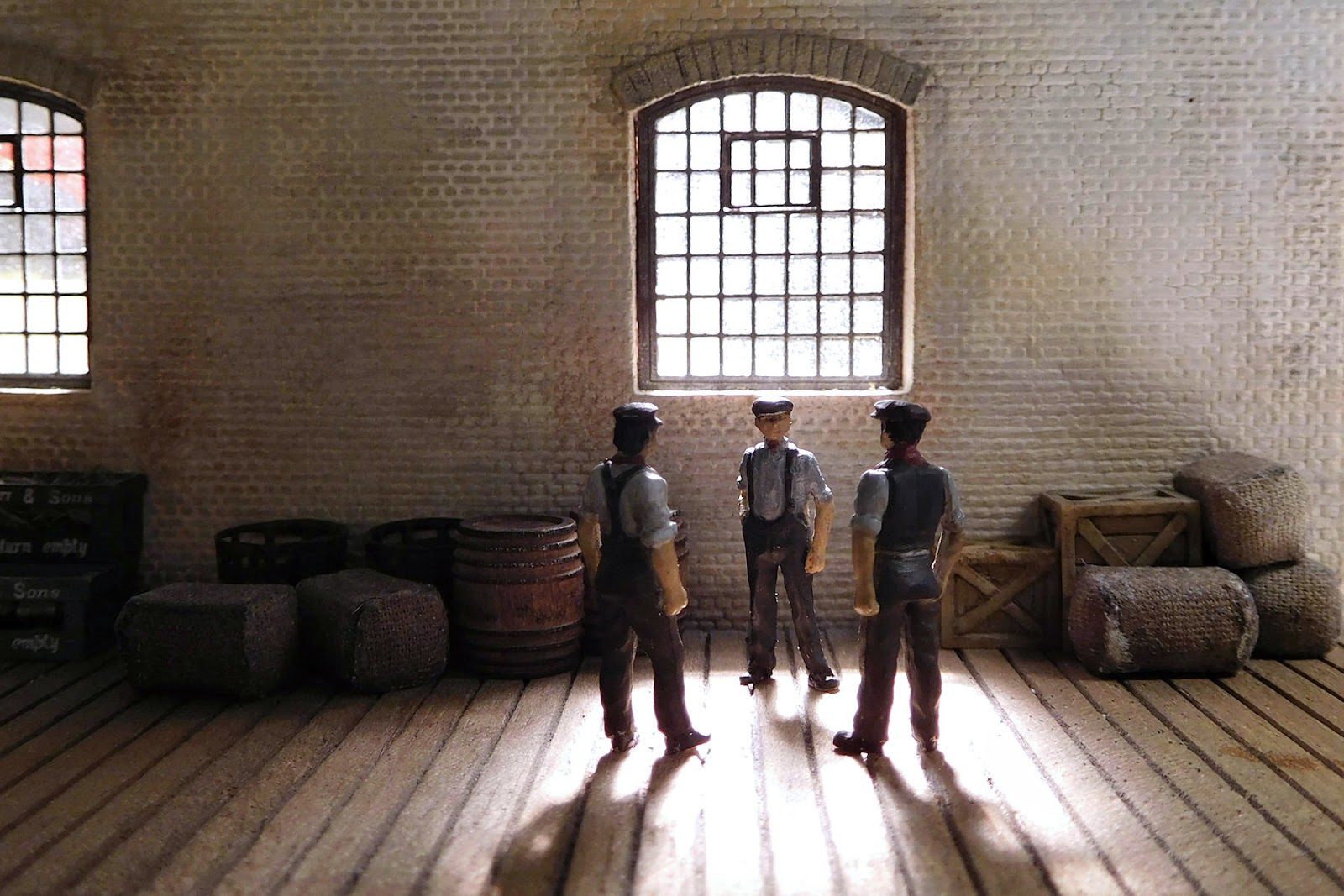This is the third and final part of a story based on a real incident on the Great Western at the turn of the century. The story began here.
Having produced their damning evidence, Detective Benton and constable Walmsley rounded up the four thieves and took them to court. I was the star witness at the trial, and made sure to tell the story well. Based on my testimony, Woods and Lawson were convicted and put away.
Unfortunately Fraser and Marsh - the two other slipper boys - got off free. I hadn’t counted on that. After the trial they returned to work and cornered me.
I ran off, but they chased me…
…all over…
…the goods depot.
In the end I had to call for help…
…and soon we were four against two.
We quickly overcame the two villains, tied them up, and…
…packed them in a couple of tea crates. They were forwarded that night on the 2AM goods, labelled for Thurso.
Because you see, dear reader, I haven’t been quite honest with you…
I’ve got a gang of my own, and we didn’t want those amateurs intruding on our turf. Not that they were any competition, really. We’re a pretty organised bunch. My uncle the goods checker is on board, and Watts the GWR copper. Handy people, if you’re into goods scams. You see, we don’t deal in petty theft. We aim much higher than that: We have ways…
…of making whole trucks…
….disappear.
*****************************************
Editor’s notes:
You may be wondering how much of this actually happened. The story roughly follows the real events recorded in the proceedings from Old Bailey up to the point of the trial (albeit in a simplified form, and with the names altered). The original theft of the satins and silks, and the clever detective work of matching the pieces of wrapping did thus in fact happen. The appearance of our “hero” the slipper boy as the star witness at the trial is also true, as is the fact that two of the thieves were released after the trial.
From there on, the story is fiction. Or is it? A closer reading of the court proceedings leave certain questions unanswered, and it is these “loose ends” that inspired the rest of the story. As for making whole wagons disappear, I refer to “GWR Goods Wagons” by Atkins, Beard and Tourret (1998 edition) which in the preface states that 3 wagons were added to the condemned list in 1908 because “they had not been heard of for 10 years” (sic).
PS: I’m using the term “truck” rather than “van” or "wagon", as that is the term used by all the staff in the testimonies of the court case at Old Bailey.












